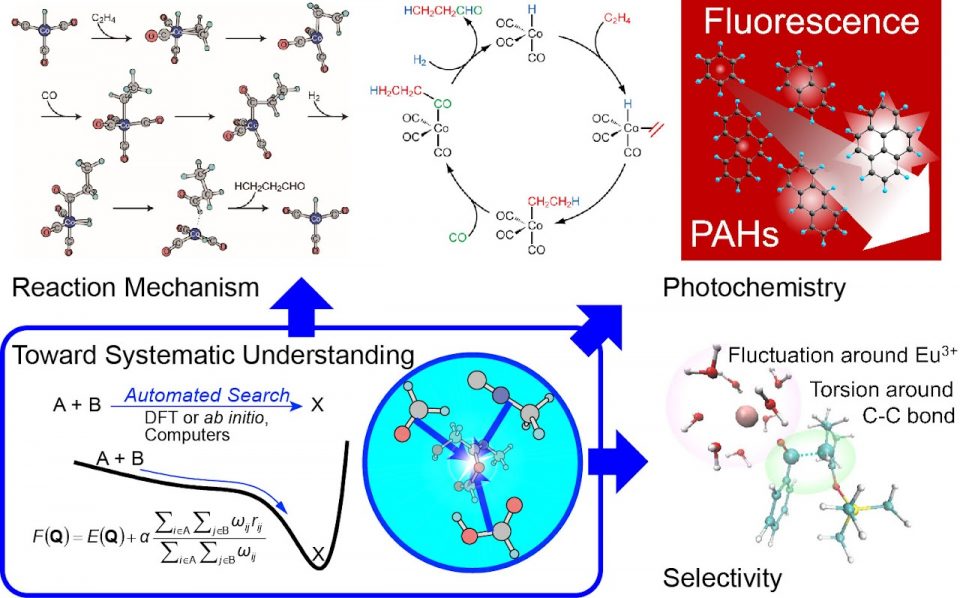
My research topic is to develop a method which explores unknown chemical reaction pathways by using quantum-chemical first-principle calculations and computers. My main calculation method is called ‘Artificial Force-Induced Reaction’ (AFIR), which operates on the principle of including in the calculations an artificial gradient that tries to push reactants together to indicate the position of transition structures on the potential energy surface. Thus we can predict all types of reactions including rearrangements of covalent bonds, hydrogen bonds, coordination bonds, metal-metal bonds, weak bonds of van der Waals interactions, and so on, and can also find pathways of conformational rearrangements, pseudo rotations in organometallic complexes, and those for non-adiabatic transitions between different electronic states.
By repeating this procedure many times, the method can find the whole reaction path network, which tells us the reaction mechanism and uncovers unknown chemical reactions.
In order to effectively find new chemical reactions, we need ideas and verification from experimental chemists. On the other hand, our AFIR method creates a large amount of data, the handling of which already is a serious problem. Therefore, by working together with experimental chemists and information scientists at ICReDD, we will be able to develop a truly useful method for the prediction of chemical reactions.
